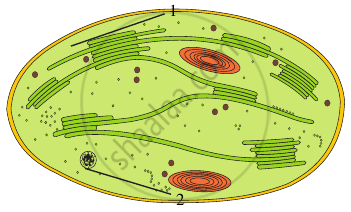Please select a subject first
Advertisements
Advertisements
A typical angiosperm flower consists of four floral parts. Give the names of the floral parts and their arrangements sequentially.
Concept: undefined > undefined
How can you differentiate between free central and axile placentation?
Concept: undefined > undefined
Advertisements
The following terms has some anatomical significance. What do these terms mean? Explain with the help of line diagrams.
Middle lamella
Concept: undefined > undefined
Common name of some animals are given in Column A, write their scientific name in Column B.
| Column A | Column B |
| A. Tiger | ______ |
| B. Peacock | ______ |
| C. Housefly | ______ |
Concept: undefined > undefined
What structural and functional attributes must a cell have to be called a living cell?
Concept: undefined > undefined
It is said that elemental composition of living organisms and that of inanimate objects (like earth’s crust) are similar in the sense that all the major elements are present in both. Then what would be the difference between these two groups? Choose a correct answer from among the following:
Concept: undefined > undefined
Many elements are found in living organisms either free or in the form of compounds. Which of the following is not found in living organisms?
Concept: undefined > undefined
Aminoacids, have both an amino group and a carboxyl group in their structure. Which one of the following is an amino acid?
Concept: undefined > undefined
An aminoacid under certain conditions have both positive and negative charges simultaneously in the same molecule. Such a form of aminoacid is called ______.
Concept: undefined > undefined
Write the name of anyone aminoacid, sugar, nucleotide and fatty acid.
Concept: undefined > undefined
Glycine and Alanine are different with respect to one substituent on the α-carbon. What are the other common substituent groups?
Concept: undefined > undefined
What is the difference between a nucleotide and nucleoside? Give two examples of each with their structure.
Concept: undefined > undefined
Describe various forms of lipid with a few examples.
Concept: undefined > undefined
When a plant undergoes senescence, the nutrients may be ______.
Concept: undefined > undefined
Match the following and choose the correct option
| Column I | Column II |
| A. Leaves | i. Anti-transpirant |
| B. Seed | ii. Transpiration |
| C. Roots | iii. Negative osmotic potential |
| D. Aspirin | iv. Imbibition |
| E. Plasmolyzed cell | v. Absorption |
Concept: undefined > undefined
A flowering plant is planted in an earthen pot and irrigated. Urea is added to make the plant grow faster, but after some time the plant dies. This may be due to ______.
Concept: undefined > undefined
Carnivorous plants like Nepenthes and Venus fly trap have nutritional adaptations. Which nutrient do they especially obtain and from where?
Concept: undefined > undefined
Name an insectivorous angiosperm.
Concept: undefined > undefined
Examine the figure

- Is this structure present in animal cell or plant cell?
- Can these be passed on to the progeny? How?
- Name the metabolic processes taking place in the places marked (1) and (2).
Concept: undefined > undefined
If a green plant is kept in dark with proper ventilation, can this plant carry out photosynthesis? Can anything be given as supplement to maintain its growth or survival?
Concept: undefined > undefined
